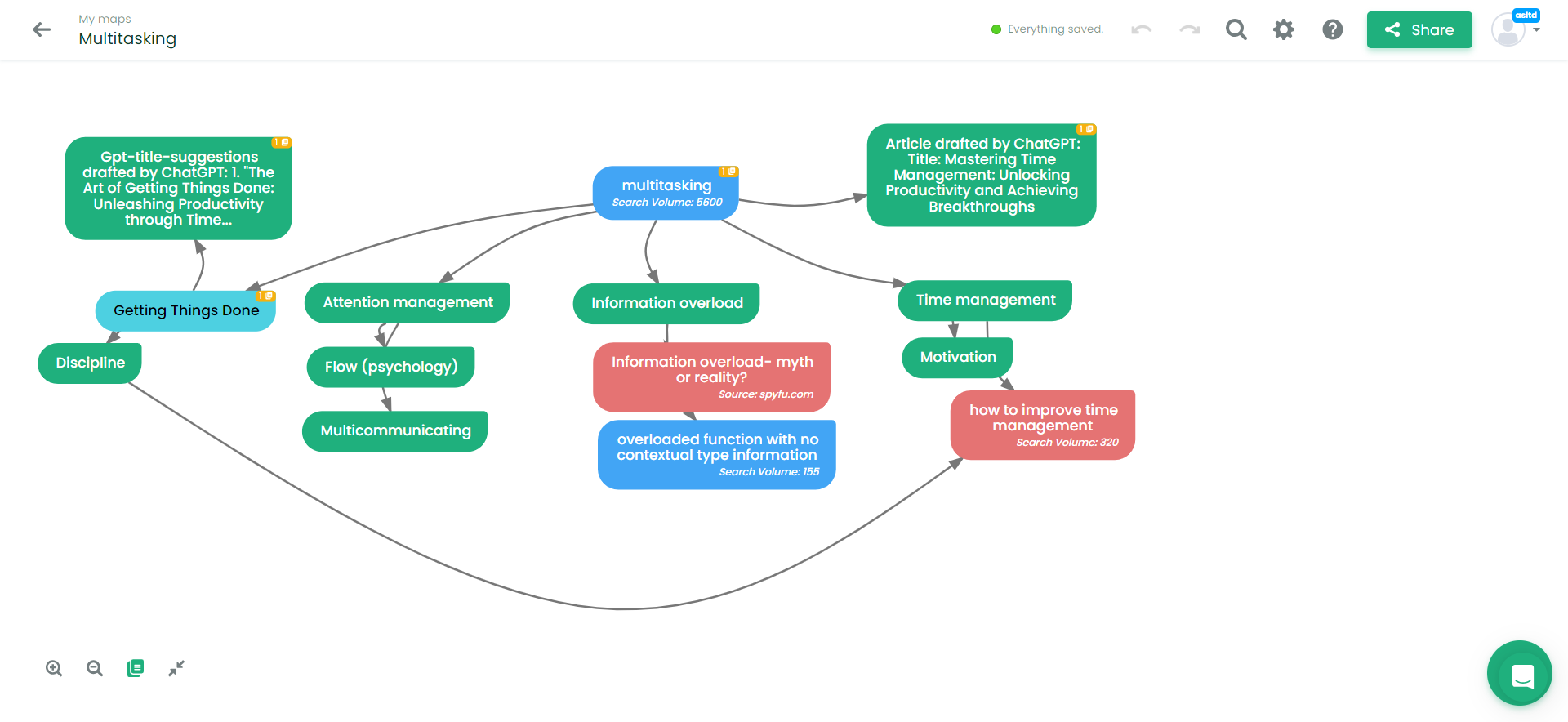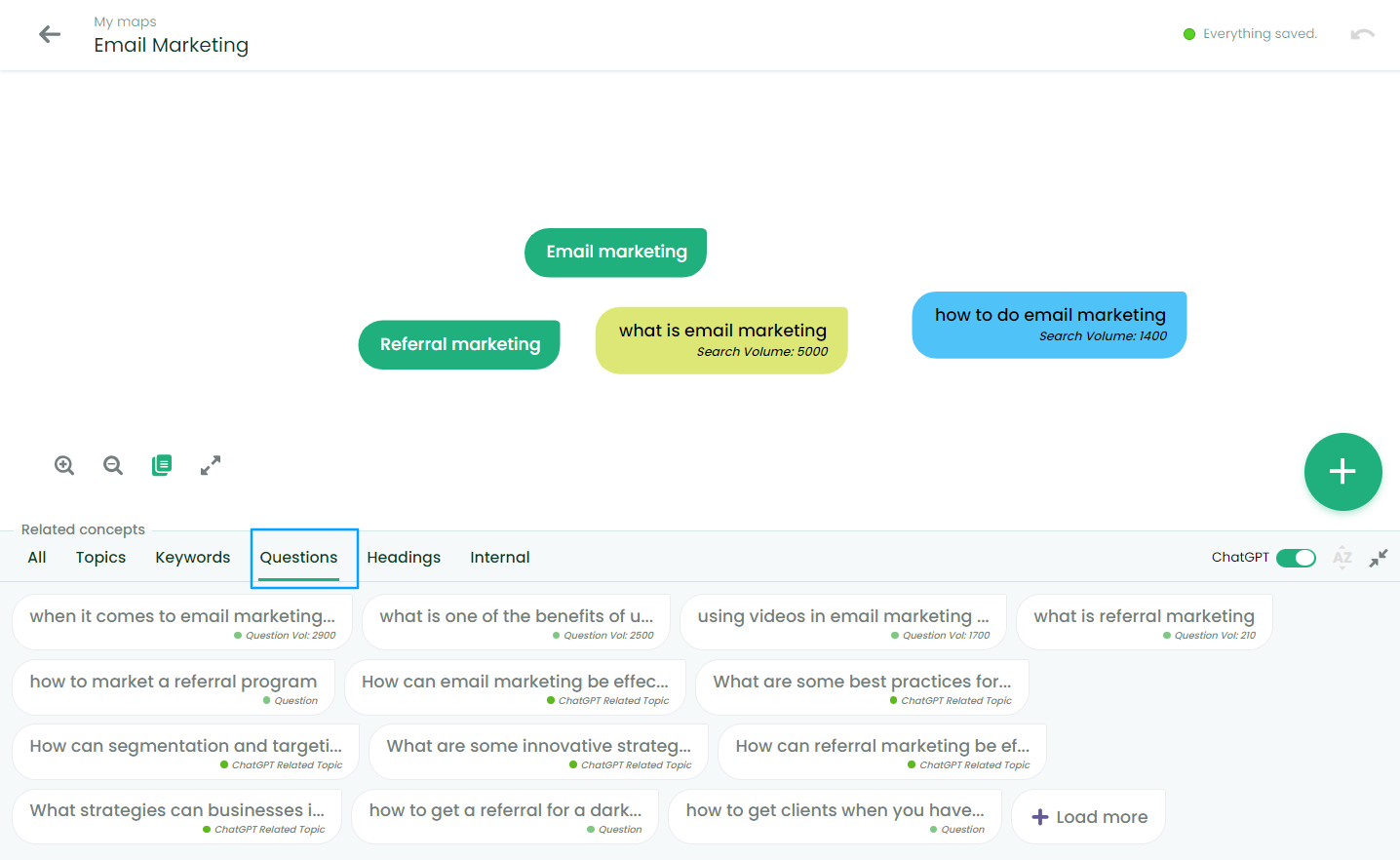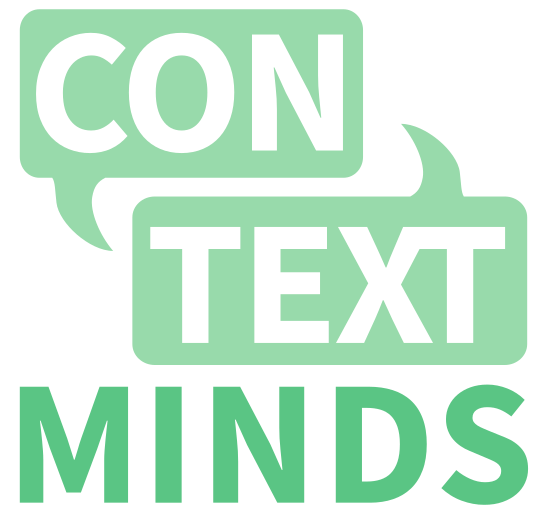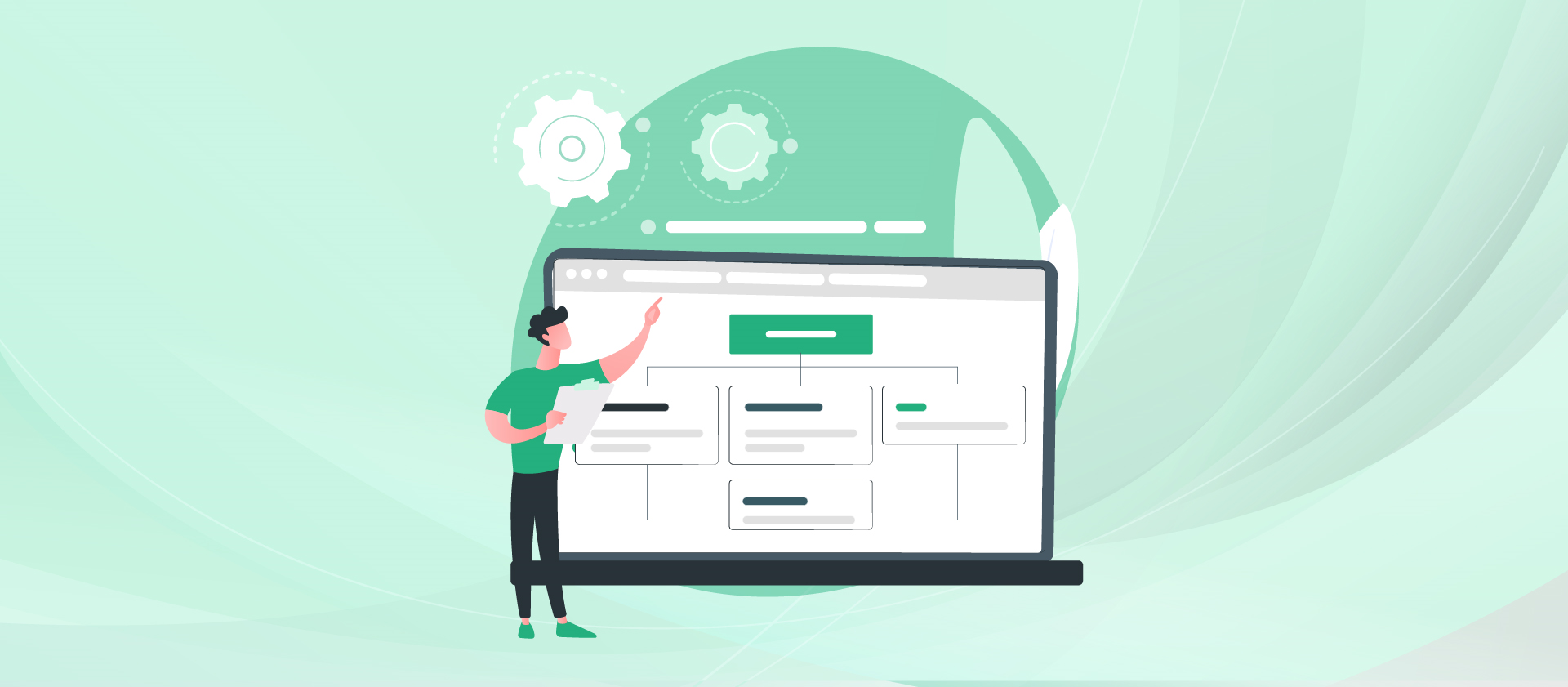The Content Creator's Checklist: Spotting and Solving Gaps via Content Mapping
Did you know that 47% of buyers view at least 3-5 pieces of content before engaging with a sales rep? But what if they can't find the precise piece of information they're seeking on your platform? That's a missed opportunity for engagement, a lost lead, or perhaps even a customer going to a competitor. Content gaps aren't mere empty spaces; they're voids that can cost businesses both traffic and trust. So, how can you ensure that your content ecosystem isn't just vast but also extensive in the right areas?
Enter content journey mapping, a method to visualize and streamline your content's trajectory, ensuring it addresses every query, every pain point, and every curiosity your audience might harbor.
Let's embark on this journey together, ensuring every word you write resonates, engages, and, most importantly, delivers.
What Exactly are Content Gaps?
Content gaps represent the missing links or unaddressed topics within your content strategy. They're the unanswered questions, the unexplored angles, and topics your potential customers are searching for but aren't finding on your platform. In essence, a content gap is a disparity between what your audience wants and what your content provides.
The Ripple Effects of Ignored Content Gaps
SEO Implications:
Search engines thrive on relevance. When your content fails to answer the pressing questions or doesn't cover a topic exhaustively, it might not rank as effectively. In the highly competitive world of SEO, a content gap can mean the difference between appearing on the first page versus getting lost among countless others.
User Engagement:
Modern users have no shortage of options. If they don't find what they're looking for on your platform, they are just a click away from another source that may provide the answers. Content gaps can lead to increased bounce rates, reduced session durations, and diminished user engagement.
Missed Opportunities:
Beyond metrics, each content gap represents a missed opportunity for fostering trust, establishing authority, and nurturing potential leads. A visitor who doesn't find the needed information might not return, and in the world of digital content, trust, once lost, is challenging to regain.
By understanding and addressing content gaps, we're not just plugging holes. We are enhancing the reach, resonance, and relevance of our content.
Benefits of Filling Gaps Through Content Mapping
Enhanced User Experience Through Precise Content Paths:
A user's journey through your content should feel like a guided tour, not a treasure hunt. Content mapping meticulously lays out information, paving a clear path for users to follow. With every question anticipated and every curiosity addressed systematically, visitors to your site can navigate seamlessly. This logical and intuitive progression enhances their overall experience, making them more likely to return and recommend your platform to others.
Improved Search Engine Rankings:
Google and other search engines reward content that comprehensively addresses user queries. Filling content gaps ensures a broader and more detailed topic coverage. This depth not only satisfies user intent but also signals to search engines that your site is a reliable resource. The outcome? Improved visibility on search engine results pages, driving organic, high-intent traffic to your platform.
Cementing Your Position as an Industry Thought Leader:
Quality over quantity is a mantra many chant, but few truly follow. By meticulously identifying and filling content gaps, you provide in-depth, well-researched insights on topics. Readers, recognizing the depth and breadth of information available, start viewing your platform as the gold standard in the industry. This reputation as a thought leader not only attracts readers but also fosters trust and loyalty.
Efficient Content Creation Processes:
Imagine knowing exactly what to write about every single time. With a comprehensive content map highlighting gaps, your content creation process becomes remarkably efficient. This clarity ensures there's no redundancy, and every piece of content, whether an article, video, or infographic, serves a specific purpose, addressing a particular audience need or query.
Heightened Retention and Engagement of Readers:
Reliable, comprehensive content is like a magnet. Once readers find a platform that consistently addresses their needs, they stick around. Each filled content gap is an invitation for readers to explore further, to delve deeper. This continuous value delivery keeps readers engaged, reducing churn rates and bolstering retention.
Comprehensive Topic Coverage:
There's a certain confidence that comes with knowing you've covered all bases. Filling content gaps ensures your platform addresses every facet of a topic, from the most popular angles to the most niche queries. This exhaustive coverage satisfies the information-hungry reader and positions your platform as a comprehensive knowledge repository.

Lowered Bounce Rates:
Every user who clicks away unsatisfied represents a missed opportunity. Content gaps often increase bounce rates as visitors fail to find the information they seek. By filling these gaps, you cater directly to user intent, ensuring they stay, explore, and most importantly, find value in your content.
Increased Conversions Through Targeted Content:
Every piece of content has the potential to drive action. The content derived from gap analysis is poised to drive conversions by targeting specific user needs and queries. Whether signing up for a newsletter, making a purchase, or simply downloading a resource, well-targeted content catalyzes user action.
Competitive Advantage in the Marketplace:
The digital ocean is filled with content of varying quality. Filling in content gaps gives you an edge over the competition. While competitors might skim the surface, your profound exploration of topics ensure unparalled value. This commitment to comprehensive content gives you a competitive advantage, attracting a larger audience share.
Reinforced Brand Reputation and Trust:
Consistent, comprehensive content builds a foundation of reliability. When users know that they can turn to your platform for accurate, exhaustive information, it fosters trust. Over time, this trust translates into a reinforced brand reputation, turning casual visitors into loyal brand advocates.
Steps to Identify Content Gaps with Journey Mapping
Keyword and Topic Research: The Cornerstone of Effective Content Strategy
Before diving into content creation, it's crucial to understand the landscape you're operating in. Keyword and topic research isn't just about finding terms with high search volumes; it's about discovering what your target audience is genuinely interested in, their pain points, curiosities, and needs. By identifying the right keywords and topics, you're laying down the foundational stones of a successful content strategy.
Manual research can be arduous, with the digital space saturated with countless keywords and evolving user queries. ContextMinds acts as your digital magnifying glass. With its intuitive interface, it doesn't just identify keywords but also offers long-tail variations. It brings forth a richer, more nuanced understanding of topic areas.
But that's not all. ContextMinds also taps into trending questions in your domain, ensuring you're not just addressing evergreen topics but also capturing the evolving interests of your audience. With this tool, keyword research becomes less about guessing and more about informed, data-driven decision-making.
Visualizing Your Content: Charting the Landscape of Your Content Strategy
Think of your content strategy as a vast landscape. While you could describe it in words or lists, nothing captures its essence like a map. Visualizing your content allows you to see the interconnectedness of topics, identify areas of richness, and spot barren zones that need attention.
A visual representation is a bird's eye view, enabling quicker insights, efficient planning, and effective content deployment. It's not just about understanding where you're going but also recognizing where you've been and where gaps might exist.

While visually mapping content sounds appealing, executing it can be challenging without the right tools. This is where ContextMinds proves invaluable. With its mind mapping and brainstorming capabilities, plotting out your content becomes feasible and fluid. The tool allows easy drag-and-drop movements, enabling swift adjustments as your strategy evolves.
Moreover, the collaborative features mean you can share these visual maps with your team, fostering collective understanding and unified direction. With ContextMinds, your content's visual blueprint becomes clear, organized, and actionable.
Analyzing Existing Content: Assessing Your Current Landscape to Build a Better Tomorrow
You've published countless pieces over the years, but do you truly know the depth and breadth of your content reservoir? Often, in the hustle of consistently producing new material, there's little time spent reflecting on what already exists. However, without this introspection, you might find yourself revisiting topics unnecessarily or completely overlooking critical areas. Analyzing current content isn't just about stocktaking; it's about ensuring every piece you've created works optimally for your strategy.
Effective Techniques for Content Analysis:
- Content Inventory: Create a detailed list of all the content pieces available. This includes blogs, videos, infographics, e-books, and any other type of content. Catalog them by date, topic, format, and performance metrics.
- Engagement Metrics: Review how each piece of content performed. High engagement can indicate areas of interest to your audience, while low engagement might point to gaps or lackluster content.
- Feedback and Comments: Sometimes, the audience directly points out gaps or asks for elaborations in comments, reviews, or feedback forms. Regularly monitor these channels for insights.
- Content Recency: The digital world evolves rapidly. Content that was relevant two years ago might be outdated now. Periodically review older content to ensure it still aligns with current trends, technologies, or industry shifts.
By systematically analyzing existing content, you not only identify gaps but also refine your understanding of what your audience values and expects. This knowledge, in turn, sets the stage for impactful, resonant content creation.
Competitive Insights: Gaining an Edge by Understanding the Battlefield
Understanding where you stand in the digital arena is paramount, which means focusing inwardly on your content and casting a discerning eye on what competitors are presenting. Begin by immersing yourself in their content landscape. Regularly auditing their platforms—whether it be blogs, videos, or podcasts—provides insights into their focus areas, the depth they explore, and the frequency of their engagements.
Engagement metrics on competitors' platforms, such as shares, comments, and likes, indicate audience preferences. They highlight what resonates and what doesn't. But beyond metrics, the actual feedback—comments, reviews, and discussions on forums—can be goldmines. They offer direct insights into what audiences appreciate, desire, or find lacking. By aligning this knowledge with industry trends and keeping your fingers on the pulse of emerging discussions, you're not merely keeping pace with competitors but setting the stage to outshine them.
Top 8 Strategies to Effectively Fill Identified Content Gaps
Brainstorming Sessions
Brainstorming is pivotal in generating innovative content ideas. It's the diversity of perspectives that often brings the richest insights. These sessions can challenge conventional thinking and introduce fresh angles, ensuring that content gaps are addressed effectively.
However, seamless collaboration is key for these brainstorming sessions. To facilitate this seamless collaboration, ContextMinds offers the ideal solution.

With its user-friendly interface, teams can share and visualize their ideas in real time, making the brainstorming process structured and result-driven. Using ContextMinds ensures that the content you produce is tailored to fill gaps and aligns with audience needs and industry trends.
Leveraging AI for Content Creation
Artificial Intelligence isn't just a buzzword; it's revolutionizing content creation. By embracing AI-driven tools, we can tap into data-driven insights, predict audience preferences, and craft content that informs and resonates.
Incorporating AI tools like ContextMinds ensures your content isn't just relevant today but stays pertinent and engaging as trends evolve and audience preferences shift.
Whether you need topic suggestions, keyword enhancements, or even refining content based on trending queries, ContextMinds delivers. Its AI-driven capabilities study patterns, analyze engagement metrics, and offer suggestions that align with current industry standards and audience interests.
SEO Optimization
Everyone wants their content to be easily found online. That's where Search Engine Optimization (SEO) comes in. Think of SEO like the signboards on a highway, helping people reach the right place.
To ensure your content is easily found, you need to understand what your readers are searching for. This means using the right words or phrases they might type into a search engine. But the internet changes quickly. Words that are popular today might not be tomorrow. So, it's vital to keep updating your content to match what people are currently looking for.
Quick SEO Tips:
- Use Relevant Keywords: These are the words or phrases that people might use when searching for your content. Make sure they are naturally included in your posts.
- Optimize Images: Always add 'alt text' to your images so search engines know what they're about.
- Link Internally: Link to your own content. This helps search engines understand more about your site and keeps readers engaged.
- Stay Updated: SEO isn't set in stone. Regularly learn about the latest SEO trends and update your content accordingly.
By following these tips and implementing good SEO practices, you ensure your content is easily found and valuable to those who find it.
Engaging with Your Audience
The most powerful content often stems from understanding and interacting with your audience. After all, they are the primary consumers of what you create. So, instead of guessing what they might want or need, why not ask them directly?
Feedback loops with readers or customers offer invaluable insights. Whether it's praise for a job well done or constructive criticism pointing out areas of improvement, every piece of feedback is a goldmine of information. It provides real, tangible directions on where your content can evolve.
One of the most effective ways to gather this feedback is through surveys. By asking targeted questions, you can gain clear insights into what your audience loves, what they want more of, or areas they feel are lacking.
But surveys aren't the only avenue. Comments on blog posts, social media interactions, or even direct emails can provide spontaneous and candid feedback. These interactions allow you to identify areas that require more depth, topics that could be expanded upon, or concepts that need simplification for better clarity.
Diversifying Content Formats: Offering A Multi-Dimensional Experience
Every audience member has a preferred way of consuming content. While some might enjoy diving deep into a lengthy article, others prefer a quick video summary or an informative infographic. In today's digital landscape, relying solely on one format could mean missing out on engaging a significant portion of your potential audience.
Recognizing the value of various content types is essential. Videos can explain complex topics visually, making them easier to understand. Infographics offer a snapshot of data-driven insights, ideal for a quick grasp. Podcasts provide an avenue for in-depth discussions and can be consumed on the go. By offering a mix, you cater to diverse audience preferences and increase the chances of your content being consumed, shared, and appreciated.
Managing these multiple formats might seem daunting, but tools like ContextMinds can simplify the process. Providing a visual framework allows you to plan, organize, and integrate different content formats seamlessly. You can envision how an infographic might complement a blog post, followed up with a podcast discussion. ContextMinds ensures your multi-format content strategy remains cohesive, aligned, and effectively executed.
Collaborate with Subject Matter Experts
Content is more than just words on a page or visuals in a video; it's about delivering accurate, credible, and insightful information. And while in-house teams are talented, there are moments when a topic demands specialized knowledge or an authoritative voice. That's where subject matter experts (SMEs) come into play.
Inviting industry or topic-specific experts to contribute can significantly enhance the depth of your content. Their expertise, honed over the years, lends authenticity to your material, instantly boosting its credibility. When readers or viewers encounter content backed by an SME, they're more likely to trust the information and regard it as authoritative.
But the collaboration isn't just about adding a name or a title; it's about leveraging their insights to fill gaps, especially in technical or niche areas. It could be a deep dive into a complex process, a nuanced perspective on an emerging trend, or clarity on a misunderstood concept. With SMEs onboard, you can ensure that your content doesn't just skim the surface but truly informs, educates, and adds value to the conversation.
Utilize Trend Analysis
Understanding and adapting to current trends is crucial for content that connects. Your audience is always looking for the latest insights, discussions, and analyses. If your content doesn't evolve with these shifting trends, it risks becoming stagnant or outdated.
Trend analysis helps ensure that your content remains fresh and aligns with your industry's current discussions or emerging themes. Whether it's a breakthrough technology, a viral social media challenge, or a pivotal industry shift, you position your content at the forefront of the conversation by keeping an eye on these trends.

However, manual trend analysis can be exhaustive. That's where ContextMinds offers a lifeline. Its 'trending questions' feature allows you to tap into real-time data, unveiling what's gaining traction in the content sphere. Whether it's a burning question, a hot topic, or a rising theme, ContextMinds ensures you're always in the know, empowering you to craft content that's not just current but cutting-edge.
Content Repurposing: Giving Your Content a Second Life
Imagine having a treasure trove of content, each piece crafted with care and precision. Now, imagine unlocking even more value from this existing content. That's the power of content repurposing.
Repurposing is the art of taking existing content and presenting it in new, varied ways, ensuring it reaches and resonates with a broader audience.
Imagine turning a detailed blog post into an engaging podcast episode or condensing critical insights into a visually appealing infographic. By doing so, you're not just recycling but revitalizing your content, tailoring it to different audience preferences and consumption habits. The result? You effectively fill content gaps and connect with segments of your audience you have previously missed.
Now, the magic unfolds when you leverage tools like ContextMinds and ChatGPT. While ContextMinds helps you visually map out and organize your content repurposing strategy, ChatGPT can assist in rewriting or adapting content for various formats, ensuring it remains fresh and relevant across platforms. Together, they make content repurposing feasible and efficient, empowering you to maximize the reach and impact of every piece you create.
Mapping Your Content's Future: Bringing It All Together:
In our journey, we've unearthed the significance of content gaps and the repercussions of leaving them unaddressed. Through content journey mapping, we've charted strategies to identify these gaps, diversify content formats, and enhance overall audience engagement. From brainstorming sessions to the role of AI and the importance of continuous engagement, every step is crucial in guaranteeing a comprehensive content strategy. It's not just about filling the gaps but ensuring they lead to bridges that connect businesses to their audience.
Having knowledge is one thing, but acting on it is what sets you apart. With tools like ContextMinds, not only can you visualize, but also optimize your content strategy.
ContextMinds is your tool to put these insights into practice, streamlining your content strategy and ensuring you stay ahead. Ready to experience it?

Useful links
Contact info
+420 607 881 942
info@contextminds.com
ContextMinds s.r.o
Blanická 922/25, Prague, Czechia
All Rights Reserved | EMC Engineering, s.r.o.









